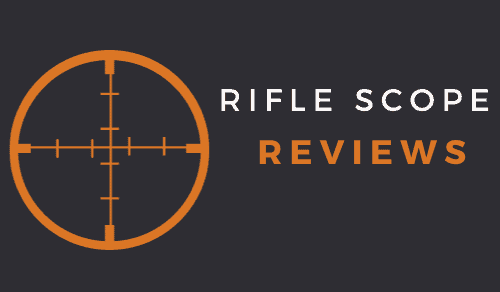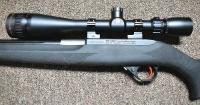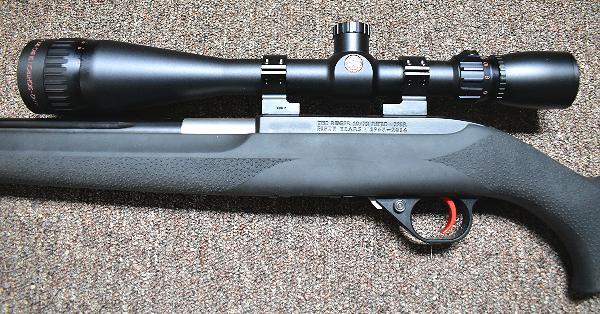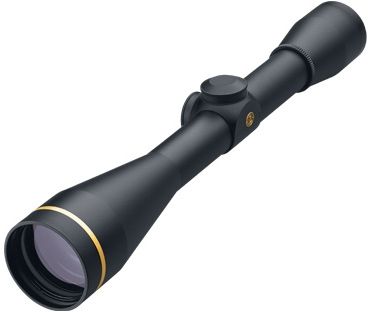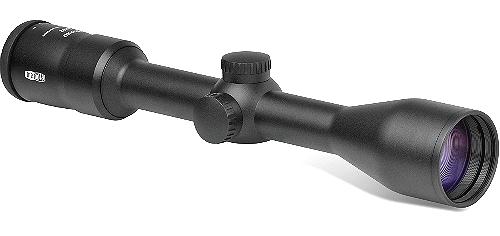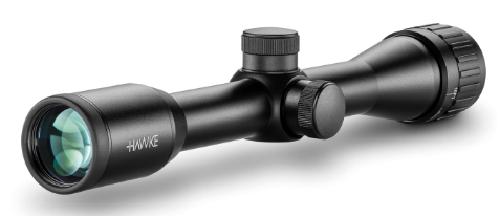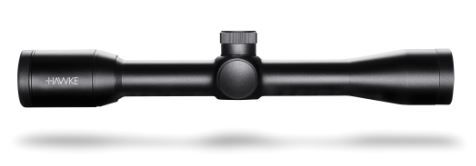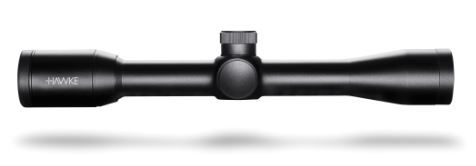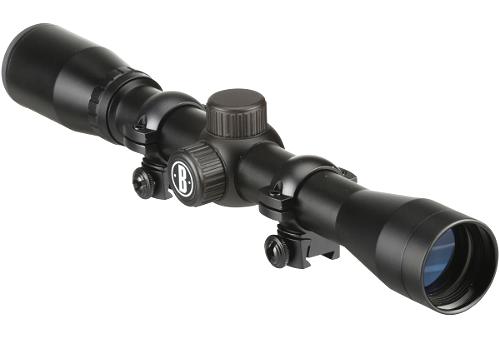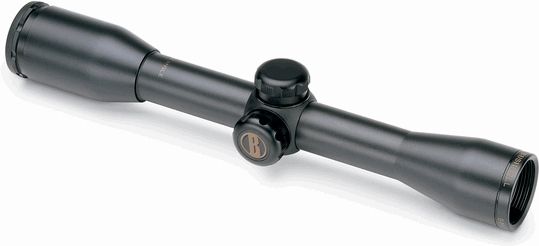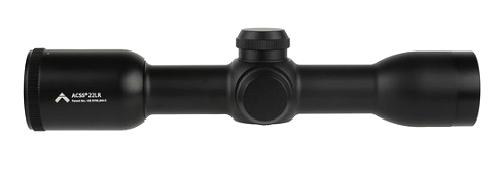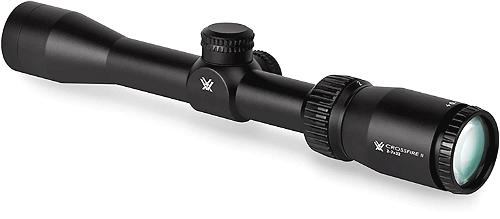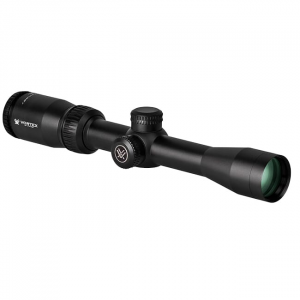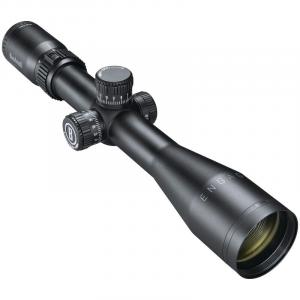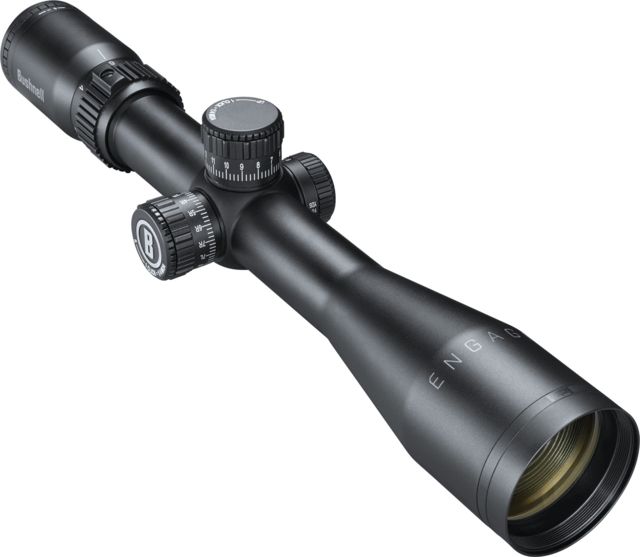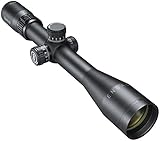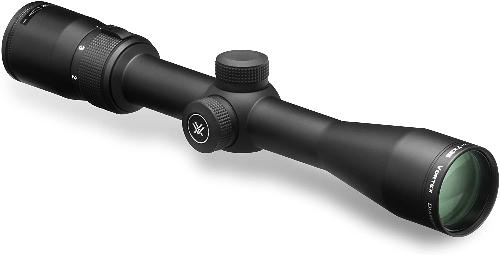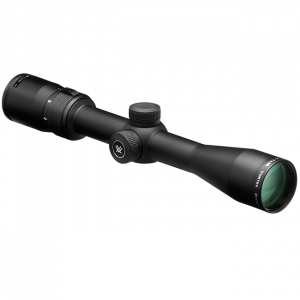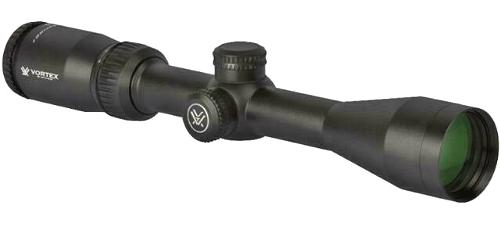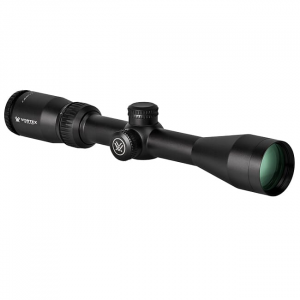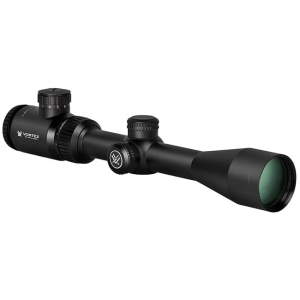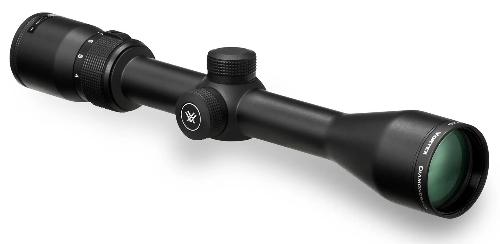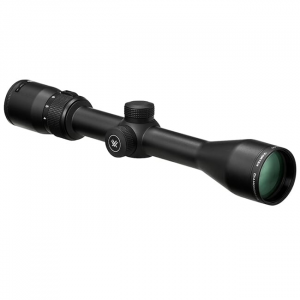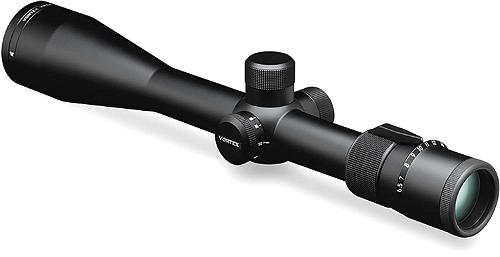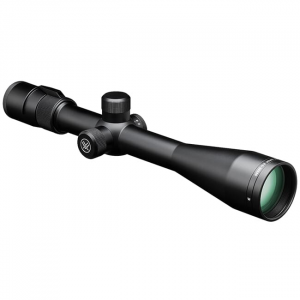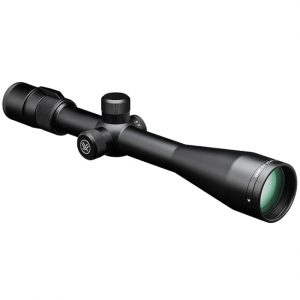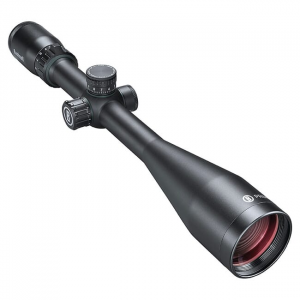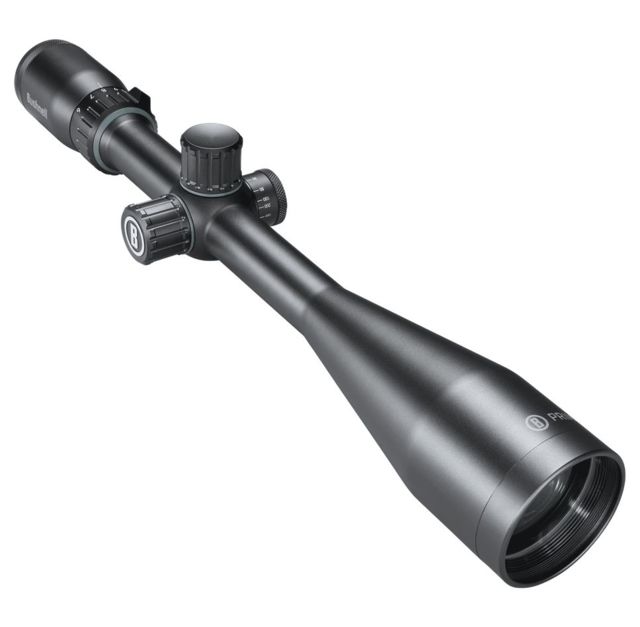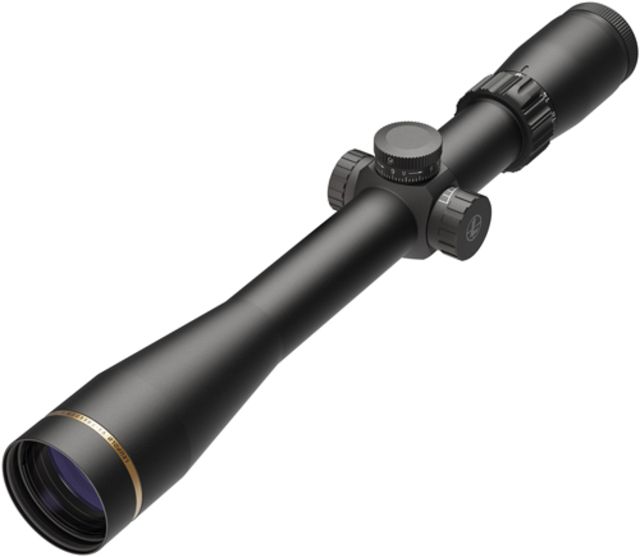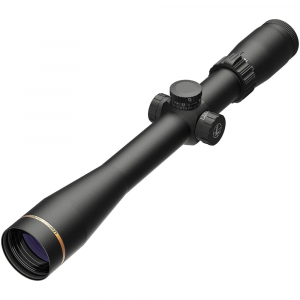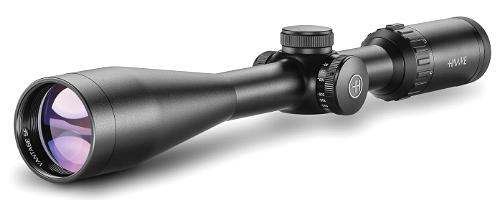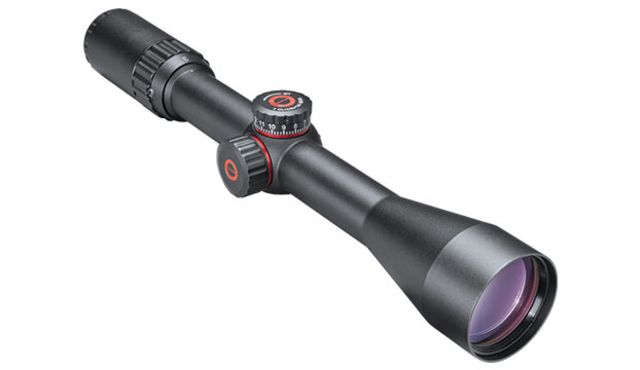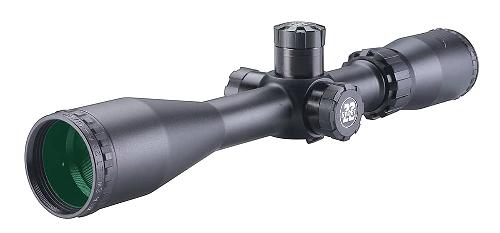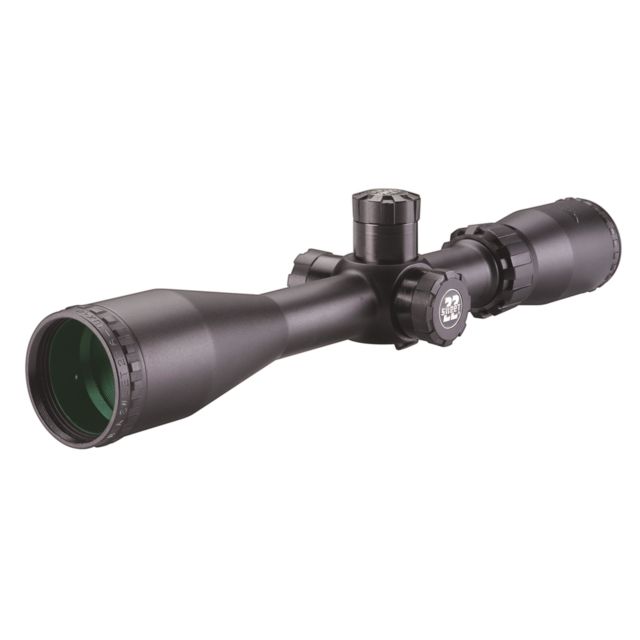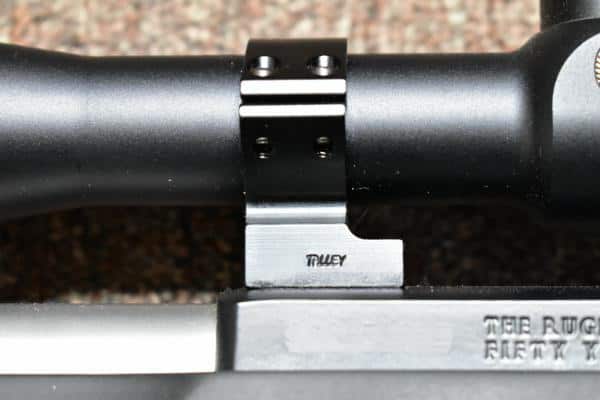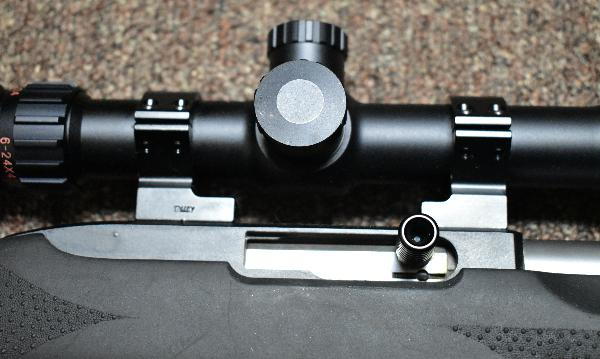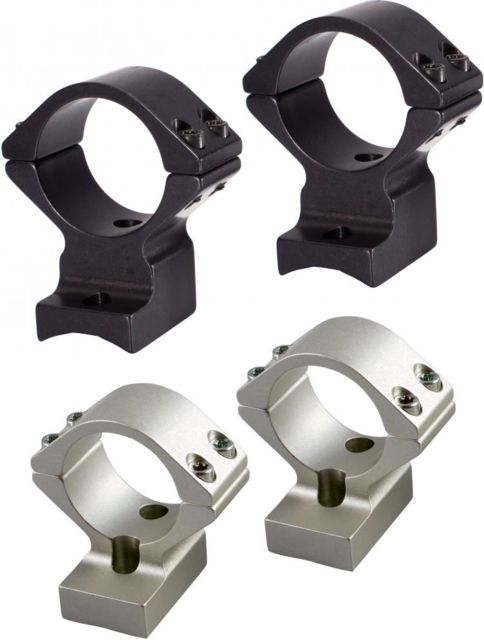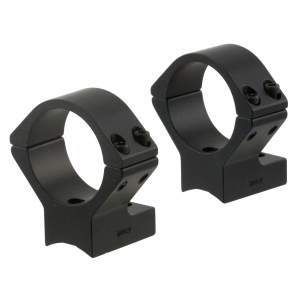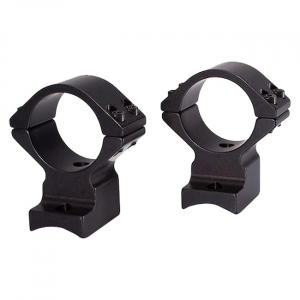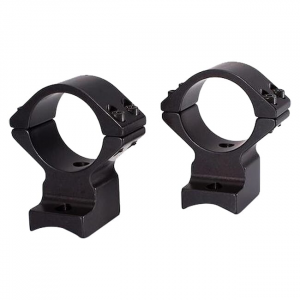As an Amazon Associate I earn from qualifying purchases. Amazon and the Amazon logo are trademarks of Amazon.com, Inc, or its affiliates.
Hardly a day goes by at my day job or through this website without someone asking me a question related to buying a 10-22 riflescope. While the actual questions may vary slightly, the most common one I hear or see is this one: What’s the best Ruger 10/22 scope?
The question is complicated to answer for two reasons:
- It’s an open-ended question. The best 10/22 optic for what purpose? Hunting small game? Plinking? Long-range shooting?
- As I’ve mentioned several times throughout this website, the “best” rating is wholly based on opinions and experiences, so the answer is entirely dependent on the person’s opinion, and experiences being asked the question.
Overview of the Ruger 10/22 Rifle
Before we get into a more in-depth discussion about telescopic sights for a 10 22, let’s take a second to do a quick overview of the Ruger 10/22 rifle.
The 10/22 rifle is a semi-automatic, rimfire rifle introduced by Ruger (which is officially called the Sturm Ruger & Co) in 1964. It is the most popular and best-selling semi-automatic .22 rifle on the market, although the Marlin Model 60 is a close second.
The 10/22 was originally chambered in 22LR, and Ruger briefly expanded the caliber options to include 22WMR and 17 HMR models. Those two calibers were eventually discontinued, and the 10 22 is currently only offered in a version chambered in 22 LR.
The 10/22 name is believed to be tied to its patented box magazine developed by Ruger, which holds ten rounds of 22 LR.
The success of the 10 22 series led Ruger to introduce a number of variants of the rifle including:
- 10/22 Takedown version
- 10/22 Compact
- 10/22 Target
- Along with several other limited editions and specialty models
The success and popularity of the 10/22 led to an entire secondary market of 10/22 parts and accessories. Every part or component of the 10-22 can be replaced with an aftermarket part. Available aftermarket part options include:
- 10/22 Barrels
- 10/22 Stocks
- 10/22 Trigger groups
- 10/22 Bolt & Bolt Groups
These days, one can purchase a 10/22 that is entirely built from aftermarket, non-Ruger parts. Most of the aftermarket parts are made to improve the accuracy or performance of a factory 10/22.
In addition to the broad aftermarket parts industry, the 10/22 is also one of the most copied designs as far as semi-automatic rifles go. There are 5 or 6 gun manufacturers who offer a licensed clone of the Ruger 1022 rifle with slight design variations.
Choosing the Best 10/22 Scope for Your Needs
Here’s how most people scope a 10 22:
- They take a riflescope that they own that is not currently in use and mount it on their new 10-22.
- They visit the nearest sporting goods store and buy whatever optic that the salesperson suggests as the “best option” for a 1022.
Neither way is necessarily a flawed approach, but there are certainly better ways to approach scoping this popular semi-automatic .22 rifle.
When I’m asked about the recommended or best scope for the Ruger 10/22, I usually ask the shopper the following questions:
- What type of shooting or hunting are you going to be doing with the rifle?
- What do you foresee as the typical distances that you’ll be shooting?
- What kind of rifle scope features are most important?
- What’s your budget for this new telescopic sight?
If they take the time to think through these questions, especially the one focusing on budget, it can help narrow down the list of the best 10 22 optical models for their specific needs.
Looking at the Different Scope Options
Let’s start talking about the main focus of this post: 10/22 riflescopes.
Each scope that I’ve mentioned below as a possible option for a 10-22 rifle has both pros and cons. Let’s get into why I think each of the models below is, potentially, a good option, and then I’ll go over what to look for in a 1022 scope in a buyer’s guide down below.
As far as 10/22 scopes go, I usually break rifle optics down into the following categories:
- Fixed Power
- Low Power
- Mid-Range
- Higher Power
Let’s dive into each of those categories a little deeper and look at my favorite options within each category.
Fixed Power Optics
Very much like the name implies, a fixed power scope is a telescopic sight hat features a single, non-adjustable magnification power. Unlike variable-powered models, fixed power scopes are typically listed or displayed in a 2-digit format compared to the typical 3-digit format seen on most adjustable powered optics.
By two-digit format, I mean a listing like the following:
- 3×32
- 4×32
- 6×42
In those examples, the first number is the magnification power, and the second number is the size of the objective (in millimeters).
The primary benefit of a fixed power scope is simplicity as there are no power ranges to adjust, no parallax or focus adjustments to make, etc.
Although I’m dating myself a bit, my first .22 rifle used a fixed 4 power scope, and my first deer rifle was also equipped with a fixed power scope.
While the popularity of fixed power scopes has dwindled over the last ten years, they still have their place in the world of scopes. In terms of a 10/22, a fixed power scope can be an excellent optic for any .22 rifle.
Scope Model | Power Range | Tube Size | Adjustable Parallax | Reticle Options |
Leupold FX-3 6x42 | Fixed 6 Power | 1 Inch | No | Wide Duplex |
Meopta MeoPro 6x42 | Fixed 6 Power | 1 Inch | No | #1 Reticle #4 Reticle #4B Reticle Z Plex-1 Reticle |
Hawke Vantage 4x32 AO | Fixed 4 Power | 1 Inch | Yes - Adjustable Objective | Mil-Dot Reticle |
Bushnell Banner 4x32 Rimfire | Fixed 4 Power | 1 Inch | No | Multi-X Reticle |
Primary Arms 6x32 ACSS | Fixed 6 Power | 1 Inch | No | ACSS .22 BDC Reticle |
Leupold FX-3 6×42
While Leupold offers a few other fixed power scope modes, the FX-3 model is their top-of-the-line fixed power scope and one of my favorite fixed power models. Built on a 1-inch tube, the FX-3 is a fixed 6 power optic with a 42mm objective.
As far as fixed power riflescopes go, the FX-3 is an ideal blend of top-quality glass coupled with simplicity of use. It features Leupold’s patented Twilight Management System for optimal low light performance.
With a FOV of 17.3 feet at 100 yards, coupled with Leupold’s Wide Duplex reticle, the FX-3 is an ideal fixed power optic for the 10-22.
| Pros | Cons |
| Lightweight at 15 ounces
Very clear and bright glass Nitrogen purged It is covered under Leupold’s outstanding lifetime warranty. | One of the more expensive fixed power scopes on the market (but you get what you pay for).
Comes with a pre-set fixed parallax set at 150 yards. (Not a dealbreaker for me, but I’d prefer it set to a shorter distance). |
Here are the best deals I could find on the Leupold VX-3 6×42:
Meopta MeoPro 6×42
Most people haven’t heard of the Meopta line of rifle optics, and that’s a real shame, as they make great scopes. The optical quality on Meopta scopes is equal to most top-tier European glass (think Zeiss or S&B) at about half the cost.
The MeoPro 6×42 scope has the best glass I’ve seen so far on a fixed power scope for the money. Plus, this model is available in 4 different reticle options, so it’s hard not to find a reticle that works for your specific needs.
Like most fixed power scopes, the MeoPro 6×42 is built on a 1-inch tube and features a 42mm objective. The field of view (FOV) on this model is a whopping 18.9 feet at 100 yards, which is outstanding for a 6x scope.
| Pros | Cons |
| Outstanding optical quality
Short, compact, and lightweight | Not exactly budget-friendly, but not an overly expensive scope either. To me, it’s worth the money if you want top-shelf glass.
Can be hard to find as Meopta seems to be slowing down production on this model. |
Here are some of the best scope specials I could find for the Meopta MeoPro 6×42:
Hawke Vantage 4×32 AO
While the Hawke line of scopes has been around for many years, they are based in England and not as well known in the United States. However, ask any serious air gunner from the UK about Hawke scopes, and they will know the brand.
Hawke scopes are good for more than just air rifles, and their fixed 4×32 is an excellent example of a fixed power scope that is ideal for a .22 rifle.
Hawke offers a few different 4×32 scope models, but the one that I really like (and highly recommend) is their Vantage 4×32 AO model.
Built on a 1-inch tube, this is one of the few fixed scope models on the market that features an adjustable objective for parallax. Most fixed power scopes have a pre-set parallax setting that is factory set and cannot be adjusted. The advantage with the adjustable AO on this model is the shooter can change the focus distance accordingly, making it an ideal Ruger 10 22 scope.
While the optical quality isn’t as good as some of the other fixed power scopes on this list (such as the Leupold FX-3 or the Meopta MeoPro 6×42), the AO feature and budget-friendly price point make it worth considering.
| Pros | Cons |
| Adjustable objective that will focus down to 5 yards (15 feet).
Impressive 28.5 feet field of view at 100 yards. Mil-Dot reticle (which I love) | The optical quality is about what you would expect for a sub $100 scope. |
Here’s a list of the best deals I could find on this Hawk Vantage 4×32 riflescope:
Bushnell Banner 4×32
The Bushnell Banner 4×32 has been Bushnell’s bestselling 4X scope for years and offers a good value as an entry-level fixed power scope.
However, Bushnell Optics is moving towards phasing out the Banner 4×32 model, so I’m not sure how much longer it will be available.
That being said, the Banner 4×32 is built on a 1-inch tube with a 32mm objective. This 32mm objective is smaller than most of the other fixed power scopes I’ve mentioned here, and that be viewed as both a positive and a negative.
On the positive side, the smaller objective means a more lightweight scope compared to some of the other models featured in this write-up. On the negative side, the smaller objective means a narrower exit aperture, so it’s not quite as bright (in my opinion) as a 6×42 with a 42mm objective.
| Pros | Cons |
| Budget-friendly
Impressive 30.1 feet field of view at 100 yards It is covered under Leupold’s outstanding lifetime warranty. | The optical quality is decent but nothing spectacular.
Factory pre-set 50-yard focus. |
If you’re in the market for one of these Bushnell Banner 4×32 scopes, here are some specials I was able to locate:
Primary Arms 6×32 ACSS
The Primary Arms 6×32 ACSS is one of my favorite fixed power models for a 10/22 because it’s one of the few fixed power models that offers a BDC reticle. By BDC, I mean a Bullet Drop Compensating reticle.
Their patented ACSS reticle can be configured to estimate 22LR bullet drop at ranges out to 300 yards. I’ve won a little lunch money on the range using this reticle and betting friends that I could hit a 16 ounce bottle at 200 yards with my .22.
The glass on this scope is better than average for a fixed power offering in the $125 price range.
| Pros | Cons |
| The 22LR BDC reticle is excellent for long-range 22LR shooting.
Primary Arms has an outstanding warranty. | The reticle takes some time and experimentation to figure out based on your preferred ammo’s specific bullet weight and speed.
Glass is better than average but nowhere near the glass on the Meopta or Leupold. |
Here are links to some of the best deals I could find on this Primary Arms 6×32 with the ACSS reticle:
Low Power Scopes
Just so everyone is on the same page, I classify a “low power” scope as any variable-powered scope with a power range below 3-9. This includes power ranges like:
- 1-4 (which is different than a fixed 4X scope)
- 2-5
- 2-7
- 3-10
Low-powered scopes certainly have their place with the 10/22 platform as they perform well at the typical sweet spot shooting distances for a 10-22, which include the 10-40 yard range. Now, that’s not to say that you can’t shoot beyond 40 yards with a 22LR using a lower-powered scope, as it is done all the time. But, for the average plinker and small game hunter, the lower-powered scope options on a 10 22 are better suited for shots below 50 yards.
Scope Model | Power Range | Tube Size | Adjustable Parallax | Reticle Options |
Vortex Crossfire II 2-7x32 Rimfire | 2 to 7 Power | 1 Inch | No | V-Plex Reticle |
Leupold VX-Freedom 2-7x33 Rimfire | 2 to 7 Power | 1 Inch | No | Rimfire MOA Reticle |
Bushnell Engage 2.5-10x44 | 2.5 to 10 Power | 30mm | Yes - Side Focus | Deploy MOA Reticle |
Vortex Diamondback 2-7x35 Rimfire | 2 to 7 Power | 1 Inch | No | V-Plex Reticle |
Vortex Crossfire II 2-7×32 Rimfire
If you are shopping for a dedicated low-powered rimfire scope for your 10-22, then the Vortex Crossfire II 2-7×32 Rimfire model might be one to consider. It’s a dedicated rimfire scope built on a 1-inch tube.
The 2-7×32 Rimfire scope is a compact 11.5″ long and weighs just over 14 ounces, so it’s an ideal compact and lightweight 22LR scope.
This scope features low-profile turrets and a fixed, factory pre-set parallax of 50 yards. The eye relief is nearly 4 inches, which is exceptional for a dedicated 22 riflescope.
| Pros | Cons |
| A very durable scope that will stand up to some serious use.
Backed by the outstanding Vortex Optics Lifetime Warranty program. The glass is surprisingly good for a scope in this price range. | This model is only available with Vortex’s V-Plex reticle, and I wished they offered it in a version with their DeadHold BDC reticle as well.
|
If you are thinking about one of these Vortex Crossfire II 2-7×32 models, here are a few good deals I was able to locate:
Leupold VX-Freedom 2-7×33 Rimfire (Model 174179)
Leupold offers a few different scopes geared towards a rimfire rifle, but the VX-Freedom 2-7×33 Rimfire model is one of my favorites.
Built on a 1-inch tube, this scope offers a power range of 2-7 and features a 33mm objective. This scope is only available with Leupold’s patented Rimfire MOA reticle, a dedicated rimfire reticle built on their popular T-MOA reticle.
With the scope set on the 7X power, this reticle offers up to 5 MOA of hold over for shots out past the 50-yard mark. But, if you prefer not to use the MOA functionality, the reticle can still function as a standard duplex-style reticle as well.
This scope comes with a factory pre-set parallax setting of 60 yards and is backed by Leupold’s excellent warranty program.
| Pros | Cons |
| Bright, clear optical resolution for a 2-7 power with good low-light clarity
Flexible and versatile reticle that can be used for longer shots. | Not inexpensive, but you get what you pay for with Leupold. |
If the Leupold VX-Freedom 2-7×33 Rimfire scope interests you, then here are the best prices I could find on that scope:
Bushnell Engage 2.5-10×44
The Engage series of scopes is considered a mid-range option within the current Bushnell line of riflescopes. This scope is marketed as an ideal blend of technology and performance at a reasonable price point.
Built on the larger 30mm tube, this scope features a 2.5X to 10X power range with a 44mm objective. Another feature I like about this model is the side focus with a parallax that will adjust to 10 yards.
The 30mm tube means a little more weight compared to a 1-inch tube, but I don’t mind that trade-off as the 30mm tube also offers a broader range of horizontal and vertical adjustments.
If you want a lower-powered scope but feel that a 3-9 is too much, then this 2.5-10 might be one to consider.
| Pros | Cons |
| The 2.5-10 is a very versatile power range for a 10 22.
Side focus that adjusts down to 10 yards. | This scope is only available with Bushnell’s Deploy MOA reticle, which may be a bit “busy” for some people.
The larger 30mm tube means a weight of nearly 20 ounces, which makes this scope heavier than most of the other models featured on this lower power range. |
Here are some of the best prices I could locate on this Engage scope:
Vortex Diamondback 2-7×35 Rimfire
If you’re shopping for a Vortex Optics dedicated 10/22 scope and the Vortex Crossfire II scope I mentioned previously didn’t meet your needs, you may want to check out the Vortex Diamondback 2-7X35 model.
Like its Crossfire II cousin, the Diamondback 2-7×35 is also a dedicated rimfire scope built for the 22Lr round.
This Diamondback model is built on a 1-inch tube and features slightly better glass than the Crossfire II model. This scope also features a fixed 50-yard parallax, with an FOV of 19.3 feet on 7X power at 100 yards.
Cost-wise, the Diamondback comes in about $75 more than the Crossfire II model.
| Pros | Cons |
| The optical quality on the Diamondback is slightly better than the Crossfire II and surprisingly good for this price range.
Wide FOV range (nearly 20 feet) on max power. | The eye relief is only 3.1 inches. That’s not an issue for a 22LR, but I’d be hesitant to mount this scope on a shotgun or anything with decent recoil. |
Here are some of the best deals I could find on this particular riflescope:
Mid-Range Scopes
Just so we’re clear, I classify a mid-range scope as one that has a power range between 3-9 and 4-12. As the 3-9 is still the most popular power range on the market, there’s an extensive range of scope options in this classification.
Given the popularity of the 3-9 power range, it’s not hard to figure out why it’s still the most common power range that shooters and hunters use for a 10/22.
Mid-range scopes can and are still an excellent choice for a 10-22, but they may not always be the best choice. The best option will be dependent on the type and style of shooting done with your 10 22.
Scope Model | Power Range | Tube Size | Adjustable Parallax | Reticle Options |
Leupold VX-Freedom 3-9x33 EFR | 3 to 9 Power | 1 Inch | Yes - Adjustable Objective | Fine Duplex Reticle |
Vortex Crossfire II 3-9x40 | 3 to 9 Power | 1 Inch | No | DeadHold BDC Reticle V-Brite Reticle V-Plex Reticle |
Sightron S1H 4-12x40 | 4 to 12 Power | 1 Inch | Yes - Adjustable Objective | Mil-Dot Reticle |
Vortex Diamondback 4-12x40 | 4 to 12 Power | 1 Inch | No | DeadHold BDC Reticle V-Plex Reticle |
Leupold VX-Freedom 3-9×33 EFR Fine Duplex (Model 175075)
I’m a big fan of the Leupold VX-Freedom scope series as I believe that they offer an excellent value for the money, coupled with Leupold’s fantastic warranty program.
While Leupold offers several 3-9 scope models that could be excellent options for a 10/22, one of my favorites is the VX-Freedom 3-9×33 EFR scope. The “EFR” designation stands for “Extended Focus Range” and means that the adjustable objective on this scope will focus down to 10 meters (30 feet). The EFR function is a beneficial feature for a 22LR scope.
Built on a 1-inch tube, this scope features a 3-9 power range with a 33mm objective. Note that Leupold also offers a 3-4X40 scope model within the VX-Freedom series, but that model DOES not have the EFR functionality.
Like the rest of the VX-Freedom series of scopes, the 3-9×33 EFR model has excellent glass that includes outstanding low-light performance.
| Pros | Cons |
| The EFR functionality is outstanding in situations where a target or game is less than 50 yards as the parallax can be focused down, so the target is in focus.
Good glass for the money. Backed by one of the best warranty programs in the scope industry. Made in the USA. | This scope is only available in Leupold’s fine duplex reticle, which may be a bit too thin for some people. |
Here are a few deals I was able to locate on this specific Leupold scope:
Vortex Crossfire II 3-9X40
The Crossfire II 3-9×40 may be the most popular selling scope model within the Crossfire II line. We sell more of this model than any other scope at my day job.
It’s worth noting that Vortex offers two versions of the Crossfire II scopes in the 3-9 configuration. One is built as a 3-9X40, while the other is built as a 3-9X50. For the purposes of this write-up, I’m focusing on the 3-9×40 model.
The Crossfire II is Vortex’s budget-friendly line of scopes that feature above-average glass coupled with solid features. The 3-9×40 model offers a 3-9 power range with a 40mm objective.
This scope series is available in 3 different reticle options:
- DeadHold BDC
- V-Brite (Illuminated)
- V-Plex
While I like all three reticles, I prefer the DeadHold BDC reticle as it can function as a standard duplex if needed, or you can use the BDC marks to extend the range on a 22LR (or most any caliber for that matter).
However, if you prefer an illuminated reticle for your 10 22 rifle, then you’d want to go with the CF2-31025 SKU, which can be seen here.
| Pros | Cons |
| Several reticle options for most any need.
Decent glass for the money. Very durable scope with an excellent warranty. | Comes with a factory present, fixed parallax set at 100 yards. This isn’t a deal-breaker, but, personally, I prefer a scope with an adjustable focus that will adjust below 50 yards. |
Below are a few different deals I was able to locate for this Vortex Crossfire II 3-9×40 scope in the different reticle options:
Sightron SIH 4-12X40 FTMD
If you’ve done any prior research on a 10/22 scope, then you probably haven’t seen much mentioned about the Sightron line of riflescopes. That’s a shame as Sightron offers a quality optical product at reasonable prices.
The S1H 4-12×40 is part of Sightron’s Field & Target series of rifle scopes. Built on a 1-inch tube, this model offers a 4-12 power range with a 40mm adjustable objective.
Two other features that I like about this model:
- Mil-Dot reticle
- Adjustable objective that will focus down to 8 yards.
If you’ve read any of my other posts on this blog, then you’ve probably seen my love affair with a mil-dot reticle. I prefer this reticle as it is one of the most versatile reticles in existence. With a mil-dot reticle, you have the option to use it as a typical duplex, or you can learn the mil-dot set-up for your specific caliber and use the mil-dots to extend your shooting ranges significantly.
Using a mil-dot reticle, I’ve made ethical hits (headshots) on squirrels, prairie dogs, and groundhogs at distances I could never manage using a duplex reticle.
I’m also a fan of the adjustable objective (although I prefer side focus) on this scope as it offers the ability to focus the parallax down on closer targets.
| Pros | Cons |
| Mil-Dot reticle
Focuses down to 8 yards. | The glass is nothing special and about what you would expect for a scope in this price range.
Good, solid warranty program but not as good as Vortex or Leupold |
Here are the best deals I could locate on this Sightron riflescope:
Vortex Diamondback 4-12×40
The Diamondback 4-21×40 scope is another model that bears potential consideration as a 10 22 riflescope. Part of the popular Diamondback series from Vortex, this scope is built with a 4-12 power range mated to a 40mm objective.
Built on a 1-inch tube, this 4-12 scope features an FOV of 11.3 feet on 12 power at 100 yards and a fixed, pre-set parallax of 100 yards.
The Diamondback series’s glass is better than average, and this series is exceptionally well built and durable.
This scope is available in one of two reticle options:
- DeadHold BDC (Which I prefer over the V-Plex)
- V-Plex (which is much harder to find than the BDC reticle)
| Pros | Cons |
| Well-built and durable
Great warranty The BDC reticle option can be utilized to extend your shooting range (with some experimentation and practice). | The fixed 100-yard parallax is doable for a 10/22, but I prefer a lower parallax distance. |
If you are considering one of the Vortex Diamondback 4-12×40 scopes, here are some discounted models I found:
Higher Powered Scopes
If the lower-powered or mid-range powered scopes don’t have enough magnification power for you, then you may want to look at a higher-powered scope. I generally lump any scope with a power magnification range above 4-12 into this category.
Popular and common magnification ranges in this category include:
- 4-16
- 4-20
- 5-25
- 6-20
- 6-25
Some people might think that a 6-20 powered scope on a Ruger 10/22 is overkill, but it really isn’t, as the choice of scope magnification is a very personal decision and usually based on a need or perceived need.
Using myself as an example, due to my poor eyesight, I don’t have a scope on any of my personal 10/22 rifles less than 4-14 power. As most of my 10-22’s are set-up for hunting purposes, I prefer a higher-powered scope for long-distance shooting and my desire for pinpoint accuracy.
Typically, a higher-powered riflescope means a heavier scope, but I can live the trade-off of the increased weight for the higher magnification as I like to see exactly what I’m shooting at.
This approach may not be for everyone, which is why I also discussed lower and mid-powered scopes in the article as well.
Scope Model | Power Range | Tube Size | Adjustable Parallax | Reticle Options |
Vortex Viper 6.5-20x50 PA | 6.5 to 20 Power | 30mm | Yes - Side Focus | DeadHold BDC Reticle Mil-Dot Reticle |
Sightron S-TAC 4-20x50 (Model 26014) | 4 to 20 Power | 30mm | Yes - Side Focus | Duplex Reticle |
Bushnell Prime 6-18x50 | 6 to 18 Power | 1 Inch | Yes - Side Focus | Multi-X Reticle |
Leupold VX-Freedom 6-18x40 (Model 175081) | 6 to 18 Power | 1 Inch | No | Tri-MOA Reticle |
Hawke Vantage SF 6-24x44 | 6 to 24 Power | 1 Inch | Yes - Side Focus | Half Mil-Dot Reticle |
Vortex Viper 6.5-20×50 PA
Bult on a 30mm tube, the Vortex Viper features a 6.5 to 20 power range mated to a 50mm objective. The Viper also features a side focus that will focus down to 50 yards.
Glass-wise, the Viper is a significant step up in glass quality over the Vortex Crossfire II and Vortex Diamondback scopes that were discussed above. However, that would somewhat be expected, given the higher price point of the Viper scope.
The Viper PA scope is available in two different reticle configurations:
- DeadHold BDC (Model VPR-M-06BDC)
- Mil-Dot (Model VPR-M-06MD)
I’m a fan of both reticle options, and you can’t go wrong with either.
If you were shopping for a 10/2 rifle scope for shooting mid-range to longer-range distances (say 100 yards or more), then the Viper 6.5-20X50 might be worth checking out.
| Pros | Cons |
| Bright clear optics
Two very good reticle options Backed by an excellent warranty. Built like a tank. | The 30mm tube and higher power magnification come at the expense of increased weight (nearly 22 ounces) and length (almost 15 inches long).
The side focus goes down to 50 yards, which isn’t bad, but I’d prefer it went a bit lower. |
If this Vortex Viper 6.5-20×50 PA scope model interests you, here are some of the better deals I found:
Sightron S-TAC 4-20×50
Here’s another Sightron scope that most people have not heard of, but it’s a real gem for the money. The S-TAC series from Sightron is their mid-priced series of scopes designed to target the mid to long-range market.
Note that Sightron offers the 4-20 series of the S-TAC scopes in both the first focal plane and a second focal plane configuration. For the purposes of this write-up, I’m going to be focusing on the 2nd focal plane models.
This S-TAC model features a 4 to 20 power range mated to a 50mm objective. Within the 2nd focal plane versions, Sightron offers the 4-20 S-TAC scope with two reticle options:
- Duplex reticle (Model 26014)
- MOA-2 reticle (26015)
I own and like both reticles, but each performs better in certain shooting situations. For example, the duplex version is far better for hunting and general target shooting, where the MOA-2 reticle is a better option for precision shooting or long-range target shooting.
All the S-TAC scopes are built on a 30mm tube and all feature a side focus adjustment. The 4-20 SFP models will focus down to a minimum of 10 yards, making them ideal for a 10 22 rifle.
The optical quality is good for the cost but not as good as the more expensive Sightron models like the SIII series.
| Pros | Cons |
| Reticle options that will meet most shooting needs.
Well-built and durable. Side focus that goes down to 10 yards. | Small detail but worth mentioning: The side focus adjustment is not marked by distance, so it can be tricky to get it set to a specific distance.
At nearly 24 ounces, it’s not a lightweight scope. |
The S-TAC 4-20×50 is an under-the-radar scope for the money, and here are the best deals I was able to find:
Bushnell Prime 6-18×50
The Prime series of riflescopes from Bushnell is marketed as a second focal plane mid-priced scope series that offers excellent features at a reasonable price point.
This scope model features a 6X to 18X power magnification range, mated to a 50mm objective. Built on a 1-inch tube, this model also features a side focus adjustment that will focus down to 15 yards.
The 6-18 Prime scope is only available in Bushnell’s Multi-X reticle, which is ideal for hunting scenarios.
This model’s optical quality is good for a sub-$300 scope but not as good as Bushnell’s higher-end scopes (which is to be expected).
| Pros | Cons |
| Versatile power range that will meet most any need.
Side focus that focuses down to 15 yards. Comes with a lifetime Bushnell warranty. | Only available in one reticle option. |
If you are considering this Bushnell Prime scope model, here are a few deals I came across:
Leupold VX-Freedom 6-18×40 (Model 175081)
As I’ve mentioned before, I think Leupold’s VX-Freedom line of scopes offers the best bang for your buck in the Leupold line.
Their VX-Freedom 6-18×40 model features a 6X to 18X power range mated to a 40mm objective. Initially, Leupold offered the 6-18×40 configuration in several reticle options, but they now only offer this scope in their Tri-MOA reticle.
Built on a 1-inch tube, this model comes with a factory set, fixed parallax of 60 yards. Weighing in at just under 17 ounces, this is a lightweight option for a scope in the 6-18 power range.
Made in the USA (which is now uncommon with riflescopes), this scope offers bright and clear optics at a decent price point and comes with Leupold’s outstanding warranty program.
| Pros | Cons |
| Good glass for the money.
Relatively lightweight for a 6-18 power scope. Supported by an excellent warranty program. | It’s only available in one reticle option.
While the fixed 60-yard parallax is not perfect, it’s better than a fixed 100-yard parallax. |
If you think this particular Leupold riflescope might be a good fit for your needs, here are some deals I found on it:
Hawke Vantage SF 6-24×44
As I mentioned previously, the Hawke line of riflescopes is not all that well-known in the USA as they are based out of the UK. The Vantage SF series of scopes is Hawke’s mid-budget line loaded with some top-notch features.
Built on a 1-inch tube, this scope features a 6x to 24X power range with a 44mm objective. The “SF” designation means it’s a side focus model, and the focus goes down to 15 yards.
This second focal plane scope is only available in a reticle set-up called a “Half Mil-dot,” which is an interesting configuration consisting of small, half mil-dots across both the reticle’s vertical and horizontal lines. If you like mil-dots, then you’ll have no issues adapting to this reticle.
The glass on this model is surprisingly good for a scope with a sub-$300 MSRP.
| Pros | Cons |
| Better than average glass for the money.
Side focus that goes down to 15 yards. Comes with a lifetime warranty. | The eye relief is marketed as being 3.5″ inches, but I find it to be less and a bit critical when you shift your head on the stock.
The half mil-dots take some getting used to with the reticle. |
If you’re interested, here are a few deals and specials I located on this scope:
Specialty 22LR Scopes
Specialty 22LR scopes are scope models built specifically for the .22 round and use a .22 LR-based BDC turret to compensate for the drop of a .22 bullet at specific distances.
I mention this type of scope as they are relatively popular for mid to long-range .22 shooting and equally popular for use on a 10 22 rifle.
BDC is an acronym for “Bullet Drop Compensation.” This riflescope style uses a particular turret that is made for .22 rounds of a specific bullet weight, and the bullet drop of that round is pre-configured into the turret.
With this style of scope, depending on the configuration, a user can shoot a .22 Long Rifle round at distances well past 50 yards without having to do any ballistic-based math to adjust for the drop of the 22 bullet at that specific distance.
Now, here are a few things to be aware of with this type of set-up:
These 22 BDC scopes are built using bullet drop mathematics based on a combination of averages and most popular. To properly do BDC math, a shooter has to know a number of variables, including:
- Bullet weight
- Bullet speed exiting the barrel.
- Bullet coefficient (which is usually provided by the ammunition maker)
- Distance to target
Obviously, these variables vary depending on the rifle and .22 ammunition set-up. So, with BDC-based .22 scopes, the BDC functionality is built around the most popular bullet weight, the average and/or most common bullet speed, and the average bullet coefficient for a 22 round.
Because of those averages and approximations in the BDC calculations, BDC-based .22 scopes are not pinpoint accurate out of the box and typically take some experimentation to achieve better accuracy.
I say that because many people buy a BDC 22 scope, get it sighted in, and then return it to the store because they couldn’t hit a 12-inch steel plate at 200 yards the first time out to the range. That’s an unrealistic expectation with so many variables at play.
Can you tune a BDC scope to hit a 12-inch plate at 200 yards? Certainty, but it takes a bit of testing and experimentation.
However, if you take the time to test the bullet drop compensation on the range, you may be surprised just how effective one of these scopes can become at longer ranges.
Scope Model | Power Range | Tube Size | Adjustable Parallax | Reticle Options |
Simmons ProTarget Rimfire 3-9x40 with BDC Turrets | 3 to 9 Power | 1 Inch | No | TruPlex Reticle |
BSA Sweet 22 SP 6-18x40 with BDC Turrets | 6 to 18 Power | 1 Inch | Yes - Side Focus | 3030 Reticle |
Simmons ProTarget Rimfire 3-9×40 (Model SRF3940)
If you like the 3-9 power range but want the integrated 22 BDC functionality, this ProTarget 3-9 model may be for you.
This Simmons scope model comes with 2 BDC-based turrets, one for a .22LR and one for a .17 HMR. Both are calibrated for caliber-based BDC drops at distances out to 200 yards. The 22LR model is made for 40-grain bullets, while the 17 HMR model is built for 17-grain bullets.
This scope is compact and light enough for any 10/22 but offers the capability to reach out to targets well beyond the 100-yard mark.
| Pros | Cons |
| Budget-friendly BDC option
A lightweight scope for a 3-9 power. | Only comes with a single BDC turret built for a 40 grain 22 round. While 40 grains is the most popular .22 bullet size, turrets for other grains like 36 or 38 would be helpful.
While the BDC functionality works as advertised, it may take some testing to fine-tune the BDC performance. The glass is decent but not great (about what you would expect in a sub $100 scope). |
If this Simmons ProTarget Rimfire 3-9X40 riflescope caught your eye, here are a few deals on it:
BSA Sweet .22 SP 6-18×40
BSA Optics was one of the first sporting optics brands to introduce a .22 scope that utilized specific BDC turrets based on grain weight. While BSA is more of an entry-level optics brand, they have continued to develop the turret-based BDC scopes and have expanded into other calibers for BDC, including 17 HMR and 223.
Note that BSA offers two variations of the Sweet 22 scope series:
- One with adjustable objective
- One with side focus
While I have one of both versions, I definitely prefer the side focus version over the AO version.
The Sweet 22 SP model in 6X to 18X magnification is BSA’s latest scope version for 22 based BDC. The 22-SP model offers a side focus that will focus down to 10 yards.
This scope comes with three turrets configured for:
- 36-grain bullets
- 38-grain bullets
- 40-grain bullets
This scope set-up is relatively easy to configure and works well out of the box. However, as I mentioned before, it may take some testing to dial in the BDC capability.
| Pros | Cons |
| Comes with 3 BDC turrets that will handle most any .22LR ammunition.
The BDC function works surprisingly well out of the box but may need to be tweaked. Side focus that goes down to 10 yards. | The glass is decent but not great. However, it’s better than some other scopes in the same sub $150 price range.
The warranty is so-so compared to some higher-end brands. |
If you are shopping for one of the BSA Sweet 22 Side Focus models in 6-18×40, here are a few deals I saw online:
Ruger 10 22 Optics Guide
Here’s a down and dirty guide discussing some of the major features to consider when shopping for a new 10/22 optic. Topics discussed include:
- What’s the best scope tube size?
- What’s the best power magnification?
- Adjustable parallax or side focus: which is better?
- What’s the ideal scope reticle for a 10-22?
- How to mount a scope on a 1022
What’s the Best Scope Magnification Range for a 10 22?
Rarely do I have a conversation about 10-22 riflescopes that someone doesn’t ask the “what’s the best scope magnification range for a 10/22” question.
While it’s a legitimate question, it’s nearly impossible to answer as there are so many variables that play a role in any scope recommendation.
If I didn’t have any further information from the customer concerning the type of shooting style being done with his or her 10 22, I’d suggest looking at a power magnification in the 4-12 range.
That range is low enough (at the 4X and 5X powers) for most short-range or up-close shooting, but high enough at the 12X power for mid-range and longer-range shots.
However, if you provided additional details about how you are going to use the rifle, I’d make the following recommendations:
- If you want the absolute most straightforward scope to set-up and use without having to adjust the power, then I’d suggest looking at a fixed 4x or 6X power scope.
- If you typically shoot at distances under 50 yards but also want the ability to magnify the target a little bit, then a scope in the 2-7 range is probably your best bet.
- If you typically take shots around 50 yards or want to be more precise with your shots (like shooting a squirrel in the head), then a 3-9 or 4-12 is a better bet.
- If you shoot past the 50-yard mark regularly, then I’d probably look at something above the 4-12 range.
- If you want a scope that you can use on your deer rifle and then switch over to your 10/22 during squirrel season, then I’d probably say a 3-9 power is your best bet.
- If you shoot targets or game at distances of 75 yards or more, then I’d suggest a scope in the 6-18 or 6-20 range.
Keep in mind; those suggestions are just one person’s opinions on the topic. At the end of the day, I would encourage you to use whatever scope power you want on your 10 22 because it’s your choice.
Parallax: Adjustable or Side Focus?
One of the more confusing topics associated with riflescopes seems to be focused on scope parallax. I’ve already written some content about parallax, so rather than repeat that information, here again, I’ll provide a link to it if you’d like to dive deeper into the topic.
The easiest way to think about rifle scope parallax is to associate it as a means to focus the scope. At the end of the day, parallax has many implications optically, and focus is one of them.
When a scope has a fixed parallax, the scope is completely in focus at whatever distance the parallax is set. Most deer rifles are set to 100 yards, while most dedicated .22 scopes are set to 50 yards or less.
Both an adjustable objective on a scope and a side focus on a scope do the same function: they allow the shooter to focus the object in the scope at specific distances.
For example, if I’m shooting at a 50-yard target, I should set my adjustable objective or side focus to 50 yards.
I own several scopes in an adjustable objective and a number made with side focus. I definitely prefer side focus between the two types of functionality as I find it easier to adjust without having to leave the glass. To be fair, I can change an adjustable objective without coming out of the scope, but I find it far more cumbersome than a side focus model.
Tube Size: 1 inch vs. 30mm
Another topic that I’m asked about ay my day job revolves around the optimum scope tube size. Most people choose between a 1-inch model or a 30mm model, although there are now 34mm and 35mm scope models on the market.
Honestly, I don’t think you can go wrong with either size as they offer pros and cons. Let’s take a more in-depth look at those pros and cons:
1-inch tube
As a 1-inch scope tube is smaller than a 30mm tube, the 1-inch models typically weigh less than their 30mm counterparts. That’s not always the case, as there are exceptions to that rule.
The 1-inch models have been around longer and are still more common than 30mm models. Since they have been around longer, it is typically easier to find 1-inch scope rings than 30mm scope rings. And by easier to find, I mean easier to source locally compared to having to buy online. However, this is slowly changing as 30mm is becoming more and more popular.
30mm tube
A 30mm tube is larger, so they are typically heavier than a 1-inch model.
The larger 30mm tube offers a more comprehensive range of elevation and windage adjustments compared to a 1-inch model. This is one of the reasons that 30mm scopes are the more popular choice with long-range shooters.
30mm tubes do not “allow in more light” and are not any brighter than a 1-inch tube solely based on tube size.
30mm tubes do not offer a wider field of view than a 1-inch model unless specifically configured to do so. And by that, I mean, if you take a 1-inch scope and a 30mm scope made by the same scope brand with the same glass coatings and same power magnification range, the 30mm model will not, by default, have a wider FOV.
So, which tube size is better?
If the weight of the scope is a concern, then a 1-inch tube is your best bet.
If you want features like side focus and a greater range of internal adjustments, then the 30mm tube is a better option for you.
For most 10/22 owners, a 1-inch tube will be your better choice.
What’s the Best Reticle for a 10 22 Scope
Aside from magnification power ranges, reticle options are the next most hotly debated topic when it comes to riflescope discussions.
Like my answer to the best power range for a 10\22, the best reticle answer will somewhat depend on the type or style of shooting you are doing with your semi-auto Ruger rifle.
For most people, the basic duplex or some variation of a duplex is usually the best option. The duplex reticle has been around forever, so people are familiar with it, and it’s easy to use with hardly any learning curve.
For general target shooting, hunting small game, and plinking, a duplex reticle is probably your best bet.
For long-range shooting at distances over 50 yards, I’d consider a reticle more geared towards that type of shooting. Examples of those reticle options include:
- Mil-Dots
- BDC-based reticle.
- Mil-hash or mil-based reticle.
As the reticle choice is a very personal decision, at the end of the day, I’d go with the reticle model that meets your needs and the one that you like the best. In my case, I prefer a mil-dot reticle or a BDC-based reticle, but that’s just me.
What About a Ruger 10/22 Scope Mount?
When it comes to mounting a scope on a Ruger 10-22, the engineers at Ruger make that a relatively easy task. The 10/22 comes from the factory with two different methods to mount a riflescope:
- A tapped receiver
- An optional add-on weaver rail
Let’s talk about each method in more detail.
Tapped Receiver
The top of most all 1022 rifles come from the factory, with the top of the receiver being tapped for a scope mount. This is a fancy way of saying that the top of the 10-22 receiver has pre-drilled screw holes built for mounting a scope via 10-22 specific scope bases or via specific 10-22 scope base and ring combos.
The topic of rings and bases can be a confusing one, so here’s a down and dirty explanation:
The term “scope base” or “bases” is generally used to describe a mount that is attached to the top (although there are side mounts as well) of the firearm receiver. The mounts can serve as either a mounting point for scope rings or serve as the mounting rings themselves if you are using a base/ring integrated combo.
The term “scope rings” or “rings” are phrases generally used to describe the circular set of rings used to mount the scope to either the bases or the firearm receiver.
Optional add-on Weaver rail
Most modern-day 10-22 rifle ships from the factory with a Weaver rail mount that can be affixed to the top of the 10-22 receiver. This mount attaches to the same set of screw holes made for bases.
The Weaver rail system is a standard rail set-up that has been around since the late 1960s and was initially designed by the founder of Weaver Optics, William R. Weaver. The Weaver rail was created as a mounting system for Weaver scope rings and became a popular rifle scope mounting platform.
The Weaver rail included with a 10-22 rifle will fit any 1 inch or 30mm scope rings built to mount on a ¼” rail.
What’s the best scope mount for a Ruger 10/22?
Both mounting methods work very well for a 1022, but I prefer to use a direct mount base/ring combo on my 10-22 rifle as this set-up keeps the scope as close to the rifle bore as possible.
There are tons of different Ruger 1022 scope mount options, but my favorite are the Talley lightweight Ruger 10-22 rings. These base/ring combo mounts come in various heights and are available in both 1 inch and 30mm versions.
Talley Lightweight 10/22 Base/Rings - 1 Inch Low Model |
These 1 inch Low versions with fit any 1 inch scope with an objective up to 40mm |
Talley Lightweight 10/22 Base/Rings - 1 Inch Medium Model |
These 1 inch Medium versions with fit any 1 inch scope with an objective up to 50mm |
Talley Lightweight 10/22 Base/Rings - 30mm Low Model |
These 30mm Low versions with fit any 30mm scope with an objective up to 42mm |
Talley Lightweight 10/22 Base/Rings - 30mm Medium Model |
These 30mm Medium versions with fit any 30mm scope with an objective up to 50mm or 52mm |
FAQS
Here are some frequently asked questions that I see associated with Ruger 1022 scopes:
What’s the best scope for a Ruger 10/22 takedown model?
The 10-22 Takedown is a specialized version of the 10/22 that can be easily broken down into two parts, making it easier to transport or carry.
The takedown functionality makes mounting a scope on that specific model slightly different from mounting a scope on a standard 10/22 or a 10/22 Compact model.
Because of its specialization, the discussion of scopes and scope mounts for a 10-22 Takedown is its own unique topic, and I’ll try to do a write-up on that as soon as possible,
What’s a Ruger 10/22 Picatinny rail scope mount, and how does it work?
A Picatinny rail is rail system adopted by the U.S. military and is different from the Weaver rail system.
There are aftermarket Picatinny rail systems made for the 1022, and those are designed to work with scope rings also built for a Picatinny rail mount.
In some cases, scope rings made for a Weaver rail will also fit onto a Picatinny rail, but rings explicitly made for a Picatinny rail will not work on a Weaver rail.
Picatinny rail systems for the 10-22 are popular with long-range shooters as the Picatinny rail can increase the elevation range needed for more extended-range shooting.
A Picatinny rail made for a 10 22 mounts on top of the receiver in the same position where the Weaver rail is mounted.
For most shooters and hunters, either the direct to receiver or Weaver rail option will work just fine.
Why don’t you recommend any Nikon scopes for a 10-22? They make some dedicated rimfire scope models that are great on a 1022.
I very much like the Nikon brand of scopes and agree that they made some excellent rifle scope options for a 10 22.
I did not list any Nikon scopes on the recommendations lists above because Nikon has exited the scope market and no longer produces riflescopes. As they are tough to find new these days, it didn’t make sense to recommend them as a current option.
Can you compare a Ruger 10/22 red dot vs scope?
A red dot sight or optic is another popular optic option for a 10 22 and has its own set of pros and cons.
Red dot optics are lightweight and work well for short-range shooting, up close target shooting, or rapid steel shooting.
The biggest con with a red dot is the lack of magnification. If you don’t need or want an optic with any magnification, then a red dot may be a viable option for you.
I prefer a traditional scope on a 10/22 as I need the magnification for my preferred types of shooting.
What are your thoughts on Weaver set of see through scope rings for a Ruger 10/22?
I own a few rifles that have see-thru rings, and I have mixed emotions about them.
On the one hand, see-thru rings give the shooter the option to use both the scope and the open sights as needed. For hunting and short-range shooting, this could be a useful set-up.
My downside, and what I don’t like about see-thru rings, is how high the scope is mounted above the rifle bore. I find a scope being mounted that high off the bore to be uncomfortable for my neck, and being mounted that high complicates the trajectory of the 22LR round, especially for short-range shots.
In closing, buying a scope for your 10 22 does not have to be an unpleasant experience. Focus on looking for the scope model that best fits your individual needs.
I’ve been working in the firearms and sporting optics industry for over 20 years, with a personal and professional interest in all things related to rifle scopes, Through a combination of work experience, formal training, and personal experiences, I have extensive experience mounting, testing, and evaluating different rifle scope models across most major optical brands.
